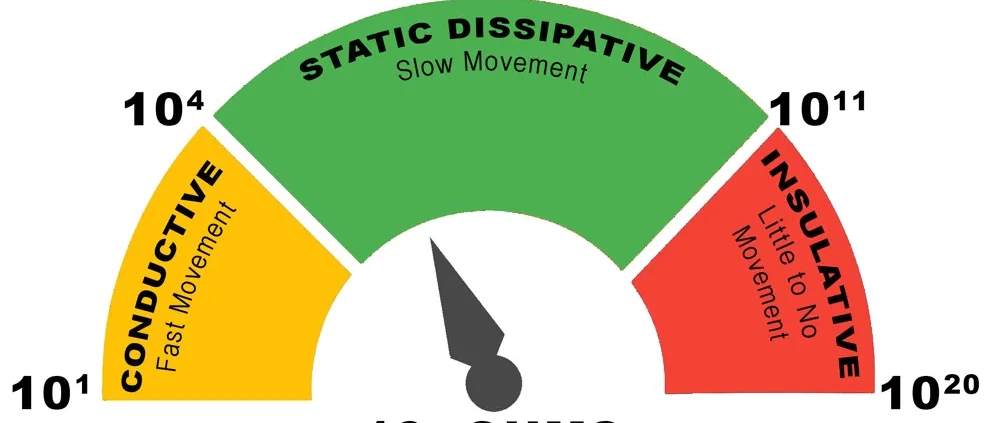Electrostatics is a phenomenon that occurs when certain materials are rubbed or separated from each other, resulting in the buildup of an electric charge. This charge can cause problems in electronic devices and systems, leading to malfunctions or even failure. To prevent these issues, various materials have been developed to manage electrostatic charges. In this article, we will explore the different types of electrostatic materials and their classification.
Electrostatic materials can be classified into four broad categories: electrostatic shielding, conductive electrostatic discharge, electrostatic dissipation, and electrostatic insulation.
Conductive Electrostatic Discharge and Electrostatic Shielding Materials with Different Potential Conductors
Conductive electrostatic discharge (ESD) and electrostatic shielding materials are designed to provide a low-resistance path for electrostatic charges to dissipate. These materials are made of conductive materials such as metals or carbon-based materials, which can absorb and discharge electrostatic charges rapidly.
ESD materials are used to protect electronic components from damage caused by electrostatic discharge. When an ESD event occurs, the ESD material provides a low-resistance path for the charge to dissipate, preventing it from damaging the electronic component.
Electrostatic shielding materials are designed to prevent electrostatic charges from entering or leaving a specific area. These materials are often used in electronic devices to prevent interference from external sources. Electrostatic shielding materials can be made of conductive materials such as metals or conductive polymers.
Electrostatic Dissipation Materials
Electrostatic dissipation (ESD) materials are designed to disperse electrostatic charges slowly over time, reducing the risk of ESD events. These materials are made of semi-conductive or dissipative materials such as carbon-based polymers or conductive ceramics. ESD materials are used in electronic devices, manufacturing facilities, and other environments where electrostatic charges can cause problems.
ESD materials can be classified into two types: intrinsically dissipative materials and surface dissipative materials. Intrinsically dissipative materials are materials that have a built-in mechanism for dissipating electrostatic charges. Surface dissipative materials are materials that have been treated with a chemical or coating to make them dissipative.
Electrostatic Insulation Materials
Electrostatic insulation materials are designed to prevent the flow of electrical current, including electrostatic charges. These materials are often used in insulating electrical cables, circuit boards, and other electronic components. Insulation materials can be made of non-conductive materials such as plastics or ceramics.
Insulating materials can be classified into two types: high dielectric constant materials and low dielectric constant materials. High dielectric constant materials have a high ability to store electrical charge, while low dielectric constant materials have a low ability to store electrical charge. The choice of insulation material depends on the specific application and the desired level of insulation.
Conclusion
In conclusion, electrostatic materials play a critical role in preventing electrostatic charges from causing damage to electronic devices and systems. The four main types of electrostatic materials are electrostatic shielding, conductive electrostatic discharge, electrostatic dissipation, and electrostatic insulation. Each type of material serves a specific purpose in managing electrostatic charges, and the choice of material depends on the specific application and the desired level of protection. By understanding the different types of electrostatic materials, engineers and designers can select the appropriate material to ensure the reliability and performance of electronic devices and systems.




Leave a Reply
Want to join the discussion?Feel free to contribute!